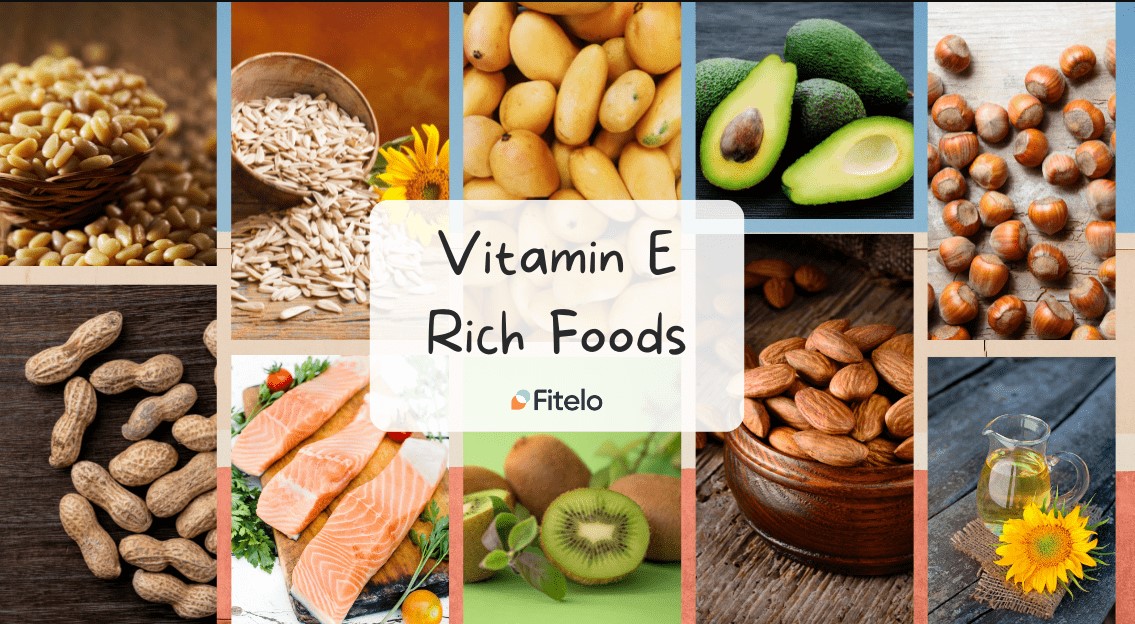
Foods High in vitamin E
Vitamin E, a strong cell reinforcement, is significant for invulnerable capability, skin wellbeing, and cell security against free revolutionaries. Adding vitamin E food varieties to your eating routine can bring various medical advantages, from improving skin versatility to supporting heart wellbeing.
This guide investigates top food varieties plentiful in vitamin E, tips on consolidating them, and the science-upheld benefits. For extra tips on health and sustenance, investigate Medical.
Why is vitamin E Essential?
Vitamin E, a fat-dissolvable nutrient, goes about as a safeguard for cells, fighting oxidative pressure, which can prompt untimely maturing and constant sicknesses. Moreover, vitamin E upgrades resistant capability, and a few investigations recommend it can further develop complexion and cardiovascular wellbeing.
Since our bodies can’t deliver vitamin E, remembering vitamin E food varieties for our diet is fundamental.
Tip: Attempt to devour vitamin E-rich food varieties with a wellspring of fat, as this further develops ingestion. For more on supporting supplement retention, visit the NIH’s micronutrient absorption guide.
Top Vitamin E Foods to Include in Your Diet
2.1. Almonds: A Snack Powerhouse
Almonds are a rich wellspring of vitamin E, offering roughly 7.3 mg per ounce (28 grams), which is almost 50% of the suggested day to day consumption for grown-ups. They are flexible and simple to integrate into dinners, whether as bites, in plates of mixed greens, or mixed into smoothies.
Fast Tip: Add a small bunch of almonds to your morning meal bowl to support your day to day admission of vitamin E and keep you invigorated over the course of the day. For additional subtleties on the advantages of almonds, allude to this

2.2. Sunflower Seeds: Small But Mighty
One ounce (28 grams) of sunflower seeds contains around 7.4 mg of vitamin E. They are ideally suited for garnish servings of mixed greens, oats, or as an independent bite.
Genuine Model: Trade bread garnishes for sunflower seeds in plates of mixed greens to improve crunch and healthy benefit. For more sunflower seed benefits, visit the Cleveland Center.
2.3. Spinach: The Leafy Green Powerhouse
Spinach, among the most supplement thick vitamin E food sources, gives around 0.6 mg per cup (cooked). Matching spinach with sound fats like olive oil in plates of mixed greens or sautés further develops vitamin E retention.
Tip: Add spinach to your smoothie or fried eggs to sneak in an additional portion of supplements. For a breakdown of spinach benefits, look at WebMD.
2.4. Avocado: Creamy and Nutritious
Avocado not just holds back around 2.1 mg of vitamin E per natural product yet additionally gives sound fats that guide in the nutrient’s retention. Crush it on toast, add to servings of mixed greens, or mix it into smoothies for a rich lift.
Genuine Knowledge: Integrating avocado with other vitamin E food varieties like almonds can intensify your admission. More on avocado’s medical advantages at Mayo Clinic.
2.5. Olive Oil: A Heart-Healthy Source
A tablespoon of olive oil gives around 1.9 mg of vitamin E. It’s a staple in Mediterranean eating regimens and can be utilized for sautéing vegetables, sprinkling over servings of mixed greens, or as a plunge for bread. Foods High in vitamin E
Speedy Tip: Supplant margarine with olive oil for cooking or baking to normally support your vitamin E consumption. Advance additional about olive oil from American Heart Association.
How to Boost Vitamin E Intake Daily
Simple Swaps:
- Substitute sunflower seeds for different bites.Foods High in vitamin E
- Add almonds or a spoonful of sunflower seeds to oats, smoothies, or prepared products.
For simple nutrient rich recipes, investigate Medical Recipe section.
Benefits of Including Vitamin E Foods in Your Diet
- Upholds Safe Wellbeing: Vitamin E reinforces insusceptibility, fundamental for warding off contaminations and advancing cell wellbeing.
- Advances Skin Wellbeing: Going about as a cell reinforcement, vitamin E lessens skin harm from UV openness, contamination, and maturing.
- Further develops Vision: Studies show that vitamin E might assist with lessening age-related macular degeneration, advancing better vision as we age.
- Foods High in vitamin E
Spinach and Almond Smoothie
- Ingredients: 1 cup spinach, 1 tablespoon almond margarine, 1/2 avocado, 1 banana, 1 cup almond milk.Foods High in vitamin E
- Instructions: Mix all fixings until smooth. Partake in a vitamin E-rich beginning to your day!
Video Tip: For smoothie recipes, look at this YouTube recipe guide.
FAQ Section
Q: What happens if I don’t get enough vitamin E?
A lack can prompt debilitated resistance, skin issues, and, in serious cases, neurological issues.
Q: Can I get enough vitamin E from supplements?
While supplements are available, experts recommend getting nutrients from whole foods for optimal benefits.
Q: How much vitamin E do I need daily?
Grown-ups ought to go for the gold mg of vitamin E day to day. Talk with your medical services supplier for individual proposals.
For more articles and insights, explore Medical Health section
Conclusion
integrating food varieties high in vitamin E into your eating regimen is a basic yet powerful method for upgrading your general wellbeing. This strong cell reinforcement upholds resistant capability and skin wellbeing, as well as assumes an essential part in safeguarding cells from oxidative pressure.
By including different sources — like nuts, seeds, mixed greens, and vegetable oils — you can without much of a stretch meet your day-to-day vitamin E needs.
Likewise with any supplement, equilibrium and assortment are critical, so intend to partake in these food sources as a component of a balanced eating regimen. With careful decisions, you can saddle the advantages of vitamin E and advance long haul wellbeing.
